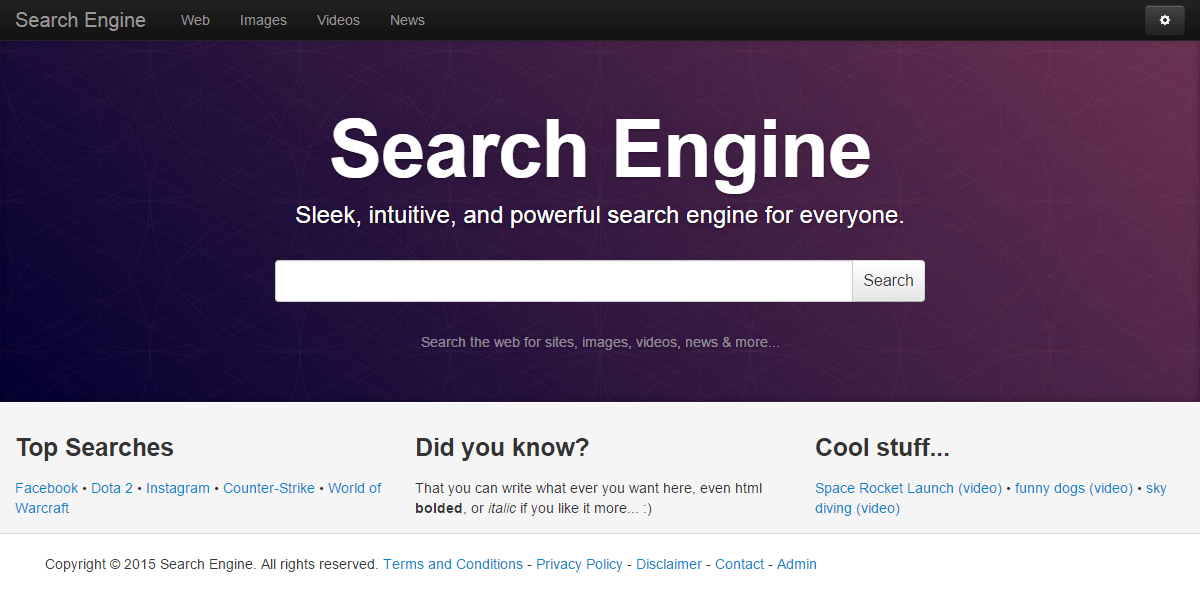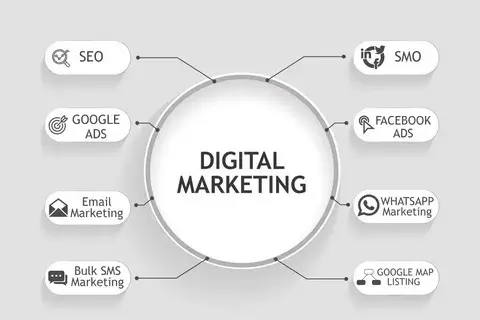Now that everything is connected digitally, the question of how to promote our businesses online effectively is more important than ever. The question “How can we advertise our business and what are the best ways to do it online?” sums up the search for methods that not only get people’s attention but also turn leads into loyal customers. Businesses need to know the best ways to advertise online as they try to make their way through the huge world of Online Advertising. There are a lot of different ways to promote something online, from using search engine algorithms to social media sites. It gives businesses information and ideas that they can use to get more exposure, keep customers interested, and eventually achieve success in the digital world.

Understanding Online Advertising
Businesses use digital strategies to sell their goods or services on the internet. These are called online advertising strategies. It uses many methods, such as search engine marketing, social media advertising, show ads, and more. Understanding how to utilize platform features, target the right audience, and craft compelling ads is essential for successful online advertising. Businesses leverage online Advertising to increase brand awareness, drive website traffic, and ultimately boost sales. In today’s digital era, grasping the intricacies of online advertising is crucial for remaining competitive and expanding reach to potential customers.
Setting Advertising Goals
Setting advertising goals that are clear and measurable is a key part of making marketing tactics work. Advertising efforts need clear goals in order to be successful, whether the goal is to raise brand awareness, website traffic. These goals make sure that advertising campaigns are in line with the general goals of the business. Clear objectives enable businesses to track progress and optimize campaigns for maximum impact and ROI.
Defining Specific Objectives
Make it clear what you want the advertising to achieve, like getting more customers or making people more loyal to your brand. This will help you plan and carry out your campaign.
Establishing Measurable Metrics
Find key performance indicators (KPIs), like click-through rates or conversion rates, to keep track of progress and get a good idea of how well advertising campaigns are working.
Ensuring Relevance to Target Audience
Customize your advertising goals to fit the wants, needs, and actions of your target audience. Make sure your campaigns are current and interesting to get the most engagement and sales.
Setting Realistic Timelines
Set realistic deadlines and targets for reaching your advertising goals. This will allow you to plan, carry out, and evaluate the success of your campaign within the time limits you set.
Finding the Target Audience
Understanding the target audience is essential for effective marketing. It includes looking at behaviors, demographics, and psychographics to make sure that messages and strategies are right for each group. By finding out what the audience wants and needs, businesses can make campaigns that are useful and interesting to potential customers, which leads to higher engagement and conversion rates.
Analyzing Demographics
By dividing the audience into groups based on things like age, gender, income, location, and so on, you can learn more about their likes and dislikes and make material and messages that are more relevant to them.
Understanding Psychographics
Finding out about the audience’s values, hobbies, lifestyles, and attitudes can help you understand what drives them and how they act, which can help you make better marketing decisions.
Assessing Behavioral Patterns
Businesses can figure out how people interact with their brand and make their marketing more effective by keeping track of things like browsing history, purchase history, and how much people interact with material online.
Utilizing Market Research
By using surveys, focus groups, and data analysis, you can get useful feedback and insights from your target audience. This can help you make smart decisions and improve your campaign.
Finding the Target Audience
Understanding the target audience is essential for effective marketing. It includes looking at behaviors, demographics, and psychographics to make sure that messages and strategies are right for each group. By finding out what the audience wants and needs, businesses can make campaigns that are useful and interesting to potential customers, which leads to higher engagement and conversion rates.

Analyzing Demographics
By dividing the audience into groups based on things like age, gender, income, location, and so on, you can learn more about their likes and dislikes and make material and messages that are more relevant to them.
Understanding Psychographics
Finding out about the audience’s values, hobbies, lifestyles, and attitudes can help you understand what drives them and how they act, which can help you make better marketing decisions.
Assessing Behavioral Patterns
Businesses can figure out how people interact with their brand and make their marketing more effective by keeping track of things like browsing history, purchase history, and how much people interact with material online.
Utilizing Market Research
By using surveys, focus groups, and data analysis, you can get useful feedback and insights from your target audience. This can help you make smart decisions and improve your campaign.
Choosing the Right Platforms
Picking the right online advertising sites is important for getting your message to the right people. It means knowing what each site is good at and who uses it, and then matching those strengths to business goals and audience tastes. Businesses can get more from their advertising and get better engagement and conversion rates if they pick the right sites.
Understanding Platform Demographics
Businesses can find out where their target audience is most active online by looking at demographics like age, gender, location, and hobbies on different platforms. This lets them make more targeted and effective advertising campaigns.
Assessing Platform Reach and Engagement
Assessing the reach and engagement metrics of different platforms, such as user engagement, frequency of visits, and time spent, helps companies choose the platforms that have the best chance of reaching and engaging their target audience.
Considering Ad Formats and Features
Businesses can select platforms aligned with their advertising objectives, offering tools for successful ad campaigns. Evaluating ad styles, targeting options, and features assists in choosing the most suitable platform. Each platform provides unique capabilities to optimize advertising strategies and achieve desired outcomes. By analyzing these factors, businesses can effectively reach their target audience and maximize advertising effectiveness.
Analyzing Competition and Industry Trends
Following industry trends and keeping an eye on your competitors’ advertising on various platforms can give you useful information about new opportunities and the best ways to do things. This can help businesses decide which platforms to invest in for the most impact and a competitive edge.
Search Engine Advertising
Putting ads on search engine results pages to sell goods or services is what search engine advertising is all about. There are ads that show up when people look for keywords that are related to what a business is selling. It’s a good way to get more people to see your website and bring them specifically, which could lead to conversions and sales.
Understanding Keyword Relevance
Choosing keywords that are related to your business’s products and services and the search queries of your target audience will make sure that your ad is seen by people who are actively looking for similar goods or services.
Crafting Compelling Ad Copy
People are more likely to click on ads and visit a website if the ad copy is interesting and convincing and shows the product’s benefits and calls to action.
Setting Budgets and Bids
Businesses can keep advertising costs low while getting the most clicks and publicity by setting budgets and competitive bids for specific keywords.
Monitoring Performance and Optimization
By keeping an eye on ad performance measures like click-through rates, conversion rates, and return on ad spend (ROAS), businesses can make campaigns work better and get a better ROI.
Advertising on social networks
Promoting goods or services on social media sites like Facebook, Instagram, Twitter, and LinkedIn is called social media promotion. Businesses can target specific groups of people based on their age, gender, interests, and behaviors. This helps them reach and interact with possible customers more effectively, resulting in more traffic, leads, and sales.
Targeting Specific Audiences
Businesses can reach specific demographics, hobbies, and behaviors on social media by using the platform’s advanced targeting tools. This makes sure that ads are seen by the most relevant audience segments.
Creating Compelling Ad Content
Making ads that look good and are interesting to read that appeal to the target audience will get them to connect, click, and buy.
Utilizing Ad Formats and Features
Businesses can pick the best advertising options for their needs and the tastes of their target audience by looking into the different ad styles and features that social media sites offer.
Monitoring Performance and Optimization
Regularly looking at ad performance metrics and making changes to targeting, creative, and budgeting based on that data makes sure that social media advertising efforts are as effective and profitable as possible.
Content Marketing
To attract and keep the attention of a specific audience, content marketing includes making and sharing useful, relevant content. Its goal is to raise awareness of the company, establish credibility, and get customers to take action that makes money. Businesses can build relationships with prospects and customers by giving them content that is both useful and fun. This can lead to more trust and sales.
Creating Valuable Content
Making informative, high-quality content that meets the needs and interests of your audience builds authority and trust with potential customers.
Distributing Content Across Channels
Businesses can expand their reach by utilizing diverse channels such as websites, blogs, social media, and email newsletters. Engaging with audiences across multiple platforms enhances interaction and visibility. Using various channels allows businesses to connect with a wider audience and foster meaningful relationships.
Establishing Thought Leadership
Businesses become authoritative sources in their field by sharing industry insights, expertise, and content that makes people think. This builds a loyal following and generates leads.
Measuring Content Performance
Businesses can figure out how well their content marketing is working by keeping an eye on key performance measures like website traffic, engagement rates, and conversion rates. This lets them make changes based on data to get better results.
Conclusion
In conclusion, In today’s digital world, it’s important for businesses to learn how to use online promotion effectively. The search for the best ways to advertise online shows how important it is to grab people’s attention and turn leads into loyal buyers. Businesses can get the most visibility, engagement, and success in the digital world by learning about the different advertising channels.











